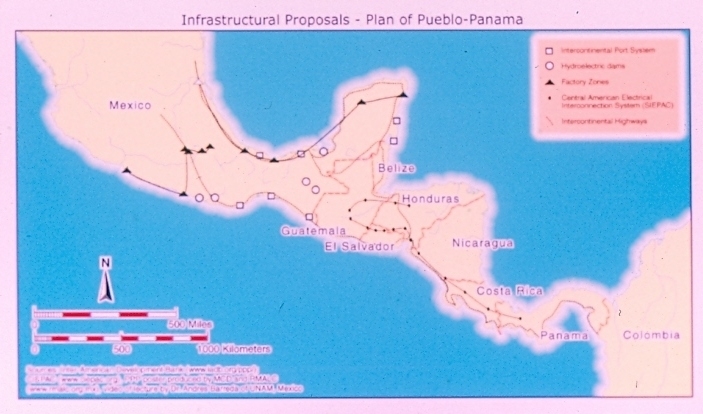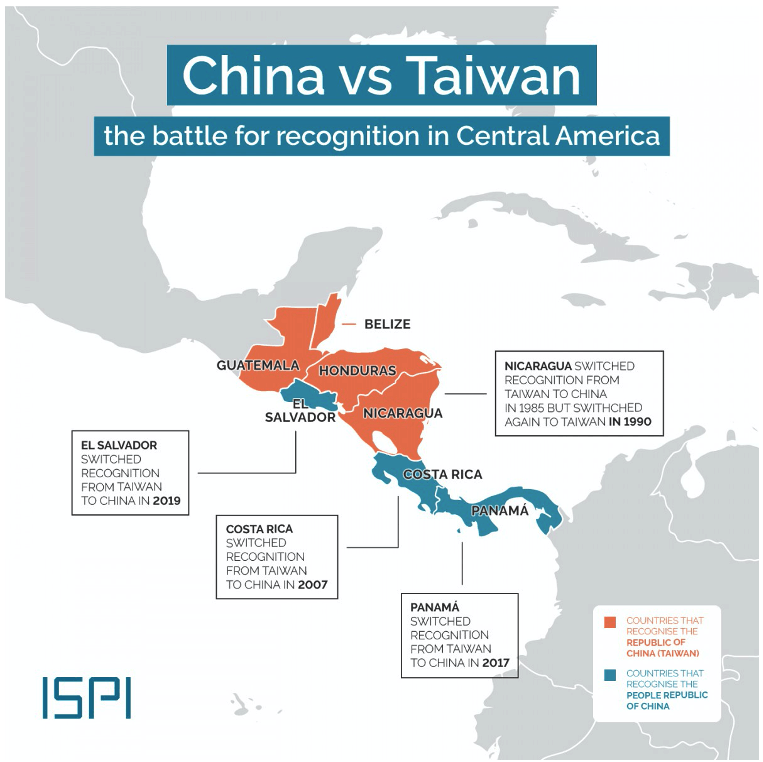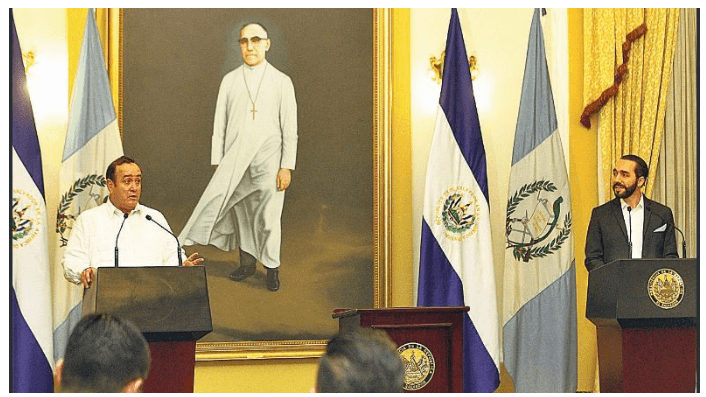Mariah Jen 20 June 2011
The Association Agreement between the EU and Central America (Costa Rica, El Salvador, Guatemala, Honduras, Nicaragua and Panama) marks an important step forward in the relationship between the two regions. The Parties have finalised the legal review of the Association Agreement which includes a comprehensive trade part. Once ratified, this agreement will open up markets on both sides, help establish a stable business and investment environment, increase benefits for citizens and will foster sustainable development. The Agreement is also meant to reinforce regional economic integration in Central America and the EU hopes for it to have a positive spill-over effect on the overall political integration process and contribute to the stability of the region. In 2010, bilateral trade in goods between Central America and the European Union was worth €12 billion.
Negotiations of the Association Agreement between the European Union and Central America were finalised in May 2010. The Agreement can enter into force once the legislative procedure involving the Council and the European Parliament has been concluded.
The Association Agreement consists of three pillars: political dialogue, cooperation and trade. The key elements of its trade pillar are presented below:
1. Substantially improved market access for EU exports to Central America
Tariff elimination – manufactured goods, fisheries and agriculture
The Agreement will largely eliminate tariffs for manufactured goods and fisheries with complete liberalisation at the end of the tariff phase-out period, generally within a ten-year period and with only a small amount (4 percent) of products after 15 years. Upon entry into force of the Agreement, Central America will liberalise 69% of its existing trade with the EU. Once the trade pillar of the Agreement is in force, EU exporters will save €87 million annually in customs duties.
In agriculture, tariffs on key agricultural products will be largely eliminated whilst “sensitive areas” for local markets are being respected. Panama, for example, is a main importer of European whiskeys to the region. 70% of its whiskey imports come from the EU and those will be liberalised on day one of the entry into force of the Agreement. All other Central American countries will liberalise this market after six years. Wine, another key product for the EU, will be fully liberalised at entry into force of the Agreement. EU exporters of wine and spirits can expect savings of €6 million annually in customs duties.
Tariffs on dairy products will be entirely eliminated with the exception of milk-powder and cheese, for which the EU has obtained duty-free quotas. These quotas cover the currently traded quantities and will be increased on an annual basis.
Addressing obstacles to trade in goods
Tariff elimination is only of real benefit if technical or procedural obstacles to trade are also being tackled. The proposed Agreement will ensure more transparency and better cooperation in the areas of “standards” and market surveillance. The agreed provisions go beyond the WTO Agreement on Technical Barriers to Trade (TBT). The requirements for marking and permanent labelling have been simplified. The Parties agree to cooperate when drafting technical regulations, setting standards and establishing conformity assessments. Most importantly, the parties will promote the development of harmonised regulations and standards within each region with a view to facilitate the free movement of goods.
It has been agreed to move towards international standards in customs legislation and simplify their procedures. This will improve trading conditions, while at the same time maintain an effective customs control. Central America has not yet harmonised standards, but has agreed to promote the development of regional customs regulations. This will facilitate operations for traders and business both within and outside the region.
As regards sanitary and phytosanitary (SPS) barriers, the Agreement also goes beyond WTO SPS requirements in key areas such as the regionalisation of animal diseases and pests, and the transparency of SPS import requirements and procedures. It includes other useful trade facilitation tools such as the listing of establishments, exports can come from. Further improvements, e.g. in the field of animal welfare have been agreed. These will help strengthen capacity building in the Central American countries and hence facilitate their market access.
Improved market access to government procurement, services and investment
The services and establishment commitments obtained from Central America are significant and meet the EU’s key interests in telecommunication, environmental, financial and maritime services. Further commitments cover cross-border services, investment and non-service sectors as well as key personnel, graduate trainees and business service sellers. The Agreement also liberalises current payments and capital movements between the Parties. These sectors will benefit from an easier access and possibilities to expand onto all markets of the Central American countries.
The opening of Central America’s public procurement market varies in terms of levels of liberalisation, with Costa Rica and Panama opening their markets more significantly than the other countries covered by the Agreement.
2. Common rules to level the playing field
Intellectual property rights & Geographical Indications
Protection of intellectual property rights is an important part of the Agreement. It includes a chapter on the effective protection of intellectual, industrial and commercial property rights and other rights covered by the WTO Agreement on trade-related aspects of intellectual property rights (TRIPS). As a result, EU rights holders will profit from improved procedures to defend their rights more effectively in case of infringements.
The Central American countries have adopted new or amended their legislation to incorporate regional specialities, so-called ‘Geographical Indications’ (GI) in a manner similar to the EU. Additionally, over 200 geographical indications, such as Champagne, Parma ham and Scotch whisky, are also specifically protected on the Central American markets to the benefit of producers of GI products in the EU.
The Agreement also makes specific reference to the importance of promoting access to medicines as well as protecting the biological diversity.
More competition and enhanced transparency on subsidies
Once the Agreement enters into force, it ensures a level playing field for European operators by calling upon national governments to ban all types of anticompetitive practices including restrictive agreements, cartels and abuse of dominance. This will help guarantee a fair and reliable competition environment for European companies.
In an effort to increase transparency particularly on subsidies, the EU and Central American countries will regularly report on the subsidies given to companies that trade in goods and also exchange information about matters related to subsidies in services. The Agreement goes beyond existing WTO rules in setting up a platform to discuss subsidies in the services sector.
A transparent way to settle trade disputes
The Trade pillar of the Association Agreement between the EU and Central America includes an efficient and streamlined dispute settlement system in accordance with the principles that the EU considers to be most important such as transparency (open hearings and amicus curiae briefs) and sequencing (no right to impose retaliation until such time as non-compliance is verified). A mediation mechanism for non-tariff barriers is also foreseen.
3. Regional Integration
The Agreement responds to Central America’s commitment to strengthen regional economic integration in the region and thus facilitate the movement of EU goods within Central America. Regional rather than “national” regulations and using a single administrative document for customs declarations will considerably ease the administrative burden on European exporters. Customs procedures as well as customs itself are going to be harmonized. Eliminating double duties over time, an importer will have to pay a single duty for the region rather than at each country’s borders. The transition period for this elimination is 2 years.
Regional integration will also help reduce the current regulatory divergences between Central American countries in the services sectors, including maritime transport. Dairy products and processed pig products, for example, will see a harmonisation of sanitary and phytosanitary requirements within the region in the coming years so as to facilitate the free movement of goods in the region.
4. An agreement for sustainable development
Further economic development through trade
Thanks to this Agreement Central American countries will benefit from liberalised access to the European markets in numerous sectors. This entails important economic and social benefits in Central America with gains in national income for Central America as a whole expected to amount at € 2.6 billion. The change in national income is estimated to vary from 0.5% in Nicaragua to 3.5% for Costa Rica in the long run due to the Agreement. In addition, the Agreement is expected to have an overall poverty-reducing effect across the Central American region.
According to an independent Trade Sustainability Impact Assessment commissioned by the EU, the Agreement is expected to contribute to large sectoral gains in the fruits, vegetables, and nuts (FVN) sector, especially for Panama and Costa Rica. Guatemala and Nicaragua are expected to become more competitive in the textiles and clothing sector for example, while El Salvador and Honduras will see an increase in their export of transport equipment.
By granting Central American countries immediate and fully liberalised access to European markets in industrial goods and fisheries, the Agreement will help exporters from these countries to move up the value-added chain. When fully enacted, the reduced costs of trade will have a beneficial impact on growth and jobs in all Central American countries.
Sustainable development
An overarching objective of the Association Agreement is to contribute to sustainable development in both Central America and the European Union, taking due account of the differences and specificities of each region. This objective is embedded in all the sections of the Agreement and finds a specific expression in the trade part through a chapter addressing the interrelation between trade and social and environmental policies. The chapter reflects the Parties’ commitments as regards internationally recognised core labour standards and multilateral agreements addressing environmental issues of international concern. It recognises the right and the responsibility of the Parties to adopt social and environmental regulations in the pursuit of legitimate objectives, and puts much emphasis on the effective enforcement of domestic labour and environmental laws. The Parties also undertake to encourage and promote trade and marketing schemes based on sustainability criteria, and to work towards a sustainable management of sensitive natural resources.
An important element in the overall structure of the Association Agreement is the role of civil society in the follow-up. A Joint Consultative Committee is foreseen and, specifically in the trade area, consultation of civil society stakeholders at domestic level goes hand in hand with a “Bi-regional Civil Society Dialogue Forum” to facilitate exchanges across the Atlantic regarding sustainable development aspects of the trade relations. Should divergences between the Parties arise in the implementation of this chapter’s provisions, recourse to an impartial panel of experts is possible under conditions of transparency.
Cooperation in trade areas
Both Parties have agreed to improve cooperation in areas such as competition, customs, intellectual property or technical barriers to trade. Enhanced cooperation in the production of organic products or the promotion of sustainable development have also been agreed.
Trade flows
In 2010, EU was Central America’s second trade partner after the US (and intra-regional trade), representing almost 9.4% of the trade flows.
In 2010, the main exporters from Central America to the EU were Costa Rica (53.9%), Honduras (21.6%) followed by Guatemala (12%). Exports consisted mainly of coffee, bananas, pineapples and microchips. EU’s exports to Central America went first to Costa Rica (36.3%) then Guatemala (28.1%) and El Salvador (15.2%) and were mainly medicines, petroleum oil and vehicles.
For more information
Text of the Association Agreement: http://trade.ec.europa.eu/doclib/press/index.cfm?id=689
More details on the benefits of the Association Agreement: http://trade.ec.europa.eu/doclib/press/index.cfm?id=687
From http://www.iewy.com/28673-highlights-of-the-trade-pillar-of-the-association-agreement-between-central-america-and-the-european-union.html





 While the Euro zone plunges into meltdown and the governor of the Bank of England predicts the worst crisis in the UK since the depression, innovative new ideas based on relationships of solidarity between countries are being successfully put into practice in the countries of the Bolivarian Alliance for the Peoples of our America (ALBA).
While the Euro zone plunges into meltdown and the governor of the Bank of England predicts the worst crisis in the UK since the depression, innovative new ideas based on relationships of solidarity between countries are being successfully put into practice in the countries of the Bolivarian Alliance for the Peoples of our America (ALBA). I think ALBA is going to provide an alternative for us in the western world. From what I can see we are pretty lost, we haven’t really got any ideas of where we are going. It can’t be about bailing out bankers and their bonuses. So for me, ALBA really does provide that framework.’
I think ALBA is going to provide an alternative for us in the western world. From what I can see we are pretty lost, we haven’t really got any ideas of where we are going. It can’t be about bailing out bankers and their bonuses. So for me, ALBA really does provide that framework.’